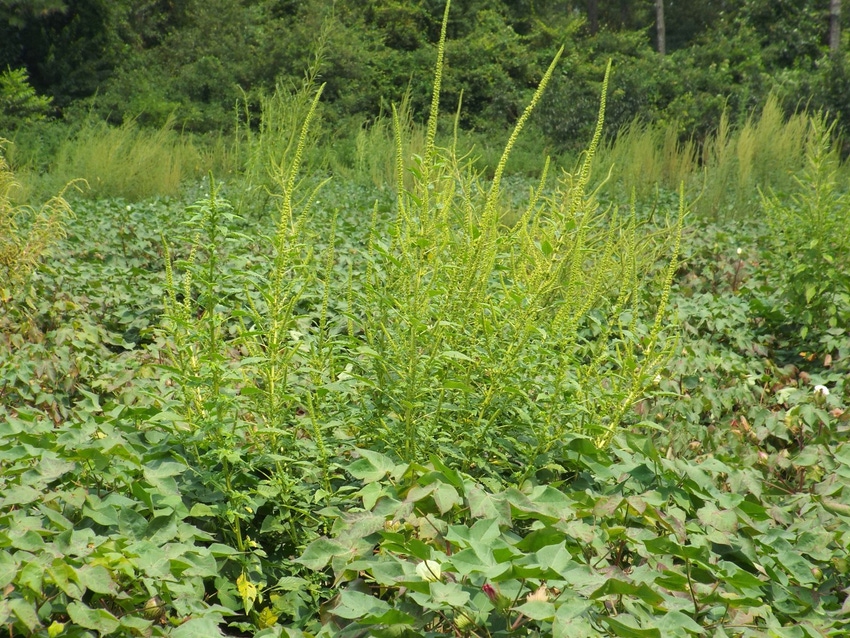
With concerns about high prices and supply constraints impacting glyphosate this year, Charlie Cahoon, North Carolina State University Extension weed specialist for corn and cotton is offering a road map for farmers to plan their herbicide strategy in 2022.
“Resistance management is something we preach ever year, but it’s going to make more economic sense this year. I’m recommending a strong pre-plant and pre-residual program in 2022. It’s going to give you a lot more flexibility when you go out there post. Your weeds will be smaller, you’ll have less of them, and you’ll have fewer different kind of weeds. That means less pressure on glyphosate, glufosinate, dicamba, or 2,4-D or whatever you are spraying over-the-top,” Cahoon said at a cotton production meeting at the Wilson County Extension Center in Wilson.
“For the life of that cotton crop, until it reaches canopy closure, we always want a residual out there. If you have a residual out there until that cotton reaches canopy, that means fewer weeds you have to control with your post product. If it saves you a spray this year, it’s going to mean more money in your pocket, a lot more money in your pocket,” Cahoon said.
For example, Cahoon emphasized it is better to spend $12 up front on a residual program to avoid additional applications of Roundup that may cost $17 per acre. He said this will be key if farmers are worried about high prices and limited availability of glyphosate this year.
Glyphosate continues to be the workhorse in controlling grasses in cotton at burndown. However, Cahoon offered some pointers on alternatives to glyphosate at burndown, but he urged caution. He also advised against cutting the recommended application rates.
“Glyphosate has long been the foundation for our burndown applications and rightfully so. It controls many different weeds. It carries the load. A lot of times we put 2,4-D or dicamba and/or a residual, like Valor, in that early burndown application to control horseweed or potentially start off our Palmer pigweed control for the year,” Cahoon said.
Cahoon urged caution for farmers considering alternatives to glyphosate.
“If you take glyphosate out of the equation, there’s one obvious replacement here: Paraquat. People are surprised when I recommend it for control of our winter annual grasses like Italian ryegrass and bluegrass. The fact is, after glyphosate, paraquat has the next broadest spectrum of burndown activity and is more consistent on ryegrass and bluegrass than other alternatives,” Cahoon said.
Additionally, Cahoon noted that he isn’t too concerned about antagonism of paraquat mixed with 2,4-D or dicamba. He pointed out that 2,4-D and dicamba are primarily used to control horseweed that is resistant to Roundup.
And how good is paraquat on horseweed?
“In my opinion, a combination of paraquat with 2,4-D or dicamba is going to control horseweed better than paraquat by itself. That’s why I’m not too worried about antagonism. Glyphosate and paraquat are not the same thing. Paraquat is a contact. we can’t spray it like we do Roundup and expect to get similar results. We need good coverage, at least 15 gallons per acre,” Cahoon said.
And through it all, Cahoon is urging farmers not to reduce rates in order to cut costs.
“We learned our lessons on cut rates a long time ago. We know that cutting rates on a weed that is small is the same as using a 1x rate on a weed that is way too big. Eventually, we select for the more tolerant individuals. Over time, we end up with a resistant population,” he said.
Cahoon said farmers who don’t have enough Roundup can consider going down to a 1x rate if weeds are small, if they have easier to control weed species, and if growing conditions are good. However, he said farmers should continue to use higher rates of Roundup if not all of these conditions are met or if mixing with 2,4-D or dicamba.
About the Author(s)
You May Also Like






